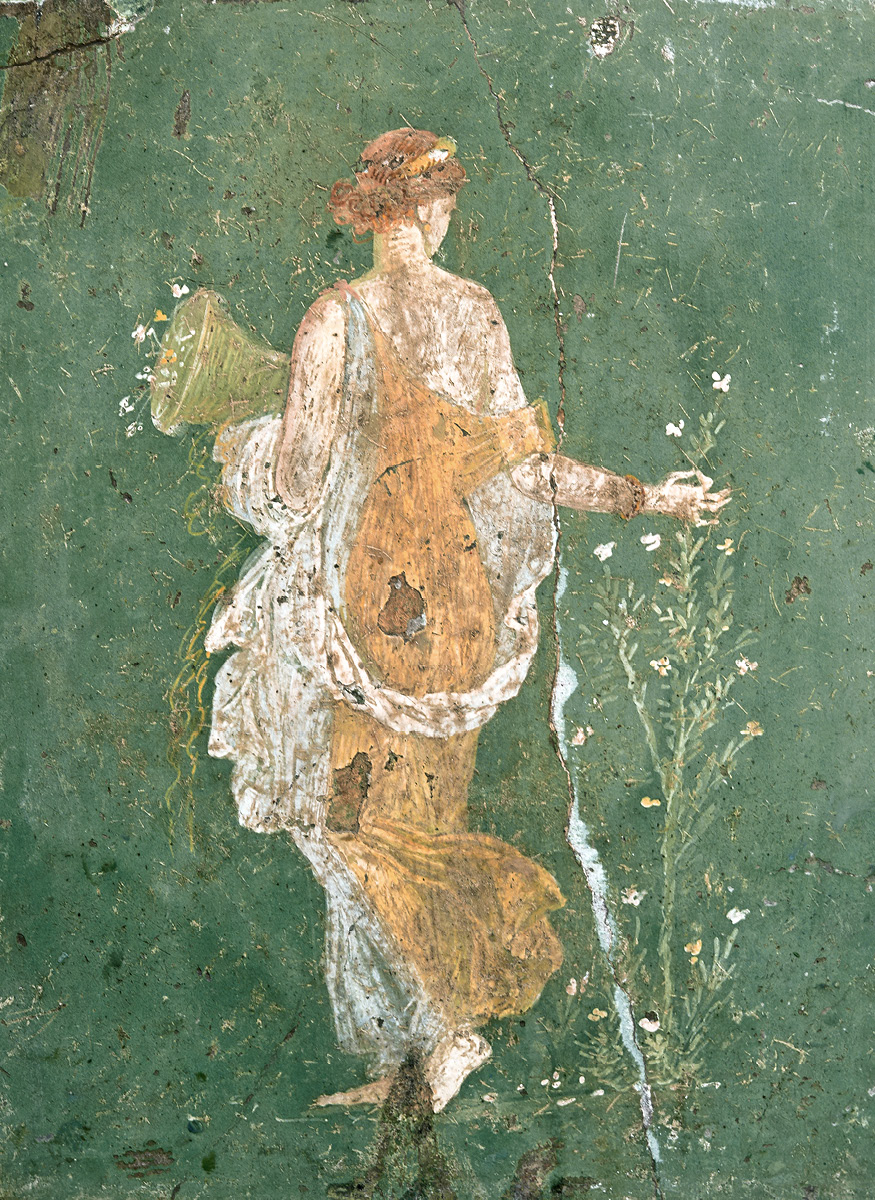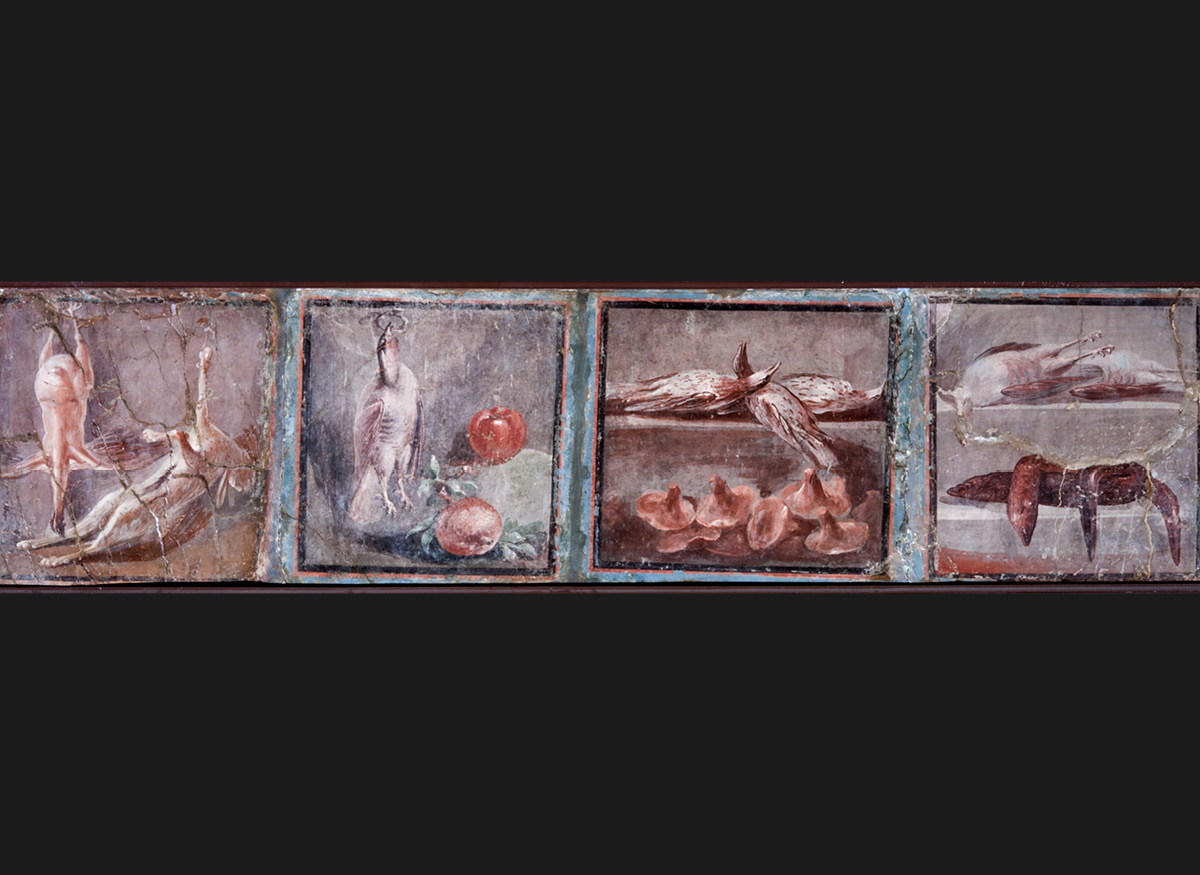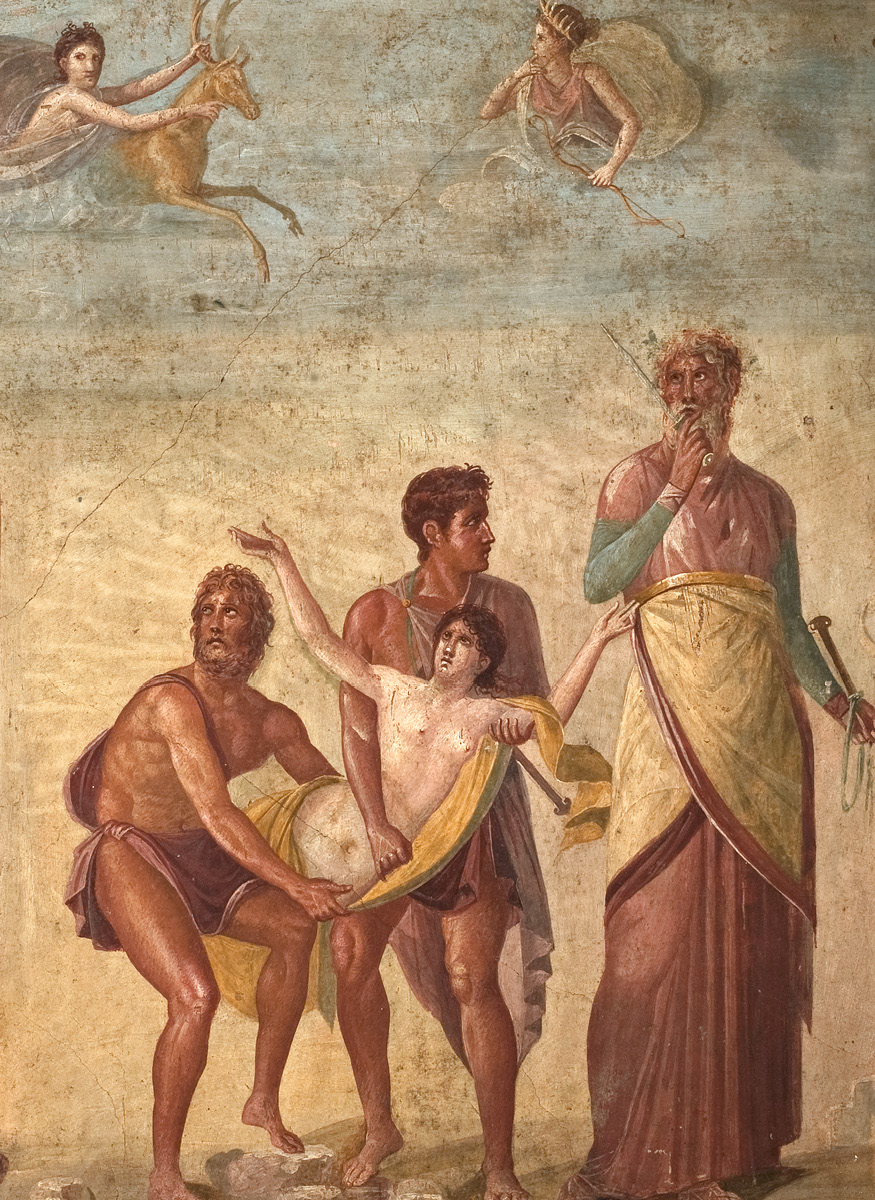Frescoes
The collection of frescoes from the Vesuvian area makes up a real manual of Roman mural painting, from the 1st century BC up to the 1st century AD. The display focuses on styles, techniques and themes, while emphasizing, whenever possible, the reconstruction of original contexts, mainly private domus, some of which, today, are not easily identifiable in ancient Pompeii. During the first excavations campaigns promoted by the Bourbons, indeed, frescoes were literally pulled from the houses’ walls and later framed as if they were paintings, making it difficult to have a comprehensive picture and nearly preventing the understanding of each decorative unit as a whole.
The gallery exhibition opens with the discovery of the first paintings during the Bourbon age, highlighting the influence they had on the taste and the fashion of the period. The tour goes on with the main techniques used in antiquity, exhibiting the tools used for drawing, like set squares and compasses, as well as the pigments used to obtain the different colours and some sinopias, preliminary sketches used to guide the actual painting. The visit follows with the evidence of the various styles, organized on a chronological basis: from the extraordinary compositions dating to the 1st century BC, fully represented by the megalographias of the villa of Publius Fannius Synistor at Boscoreale, to the paintings produced in the age of Augustus and his successors, such as the ones from the villa of Agrippa Postumus at Boscotrecase, the House of Meleager and the House of Dioscuri at Pompeii, to end with the villa of Ariadne at Stabiae.
A special attention is paid to the great themes of Roman painting, mainly inspired to mythology, Homer’s tales and Greek tragedy. Finally, the last rooms are dedicated to subjects with a more popular taste, like portraits of private citizens and paintings from lararia, which also contribute to suggest the idea of the preferences and the cultural universe of those ancient inhabitants.













